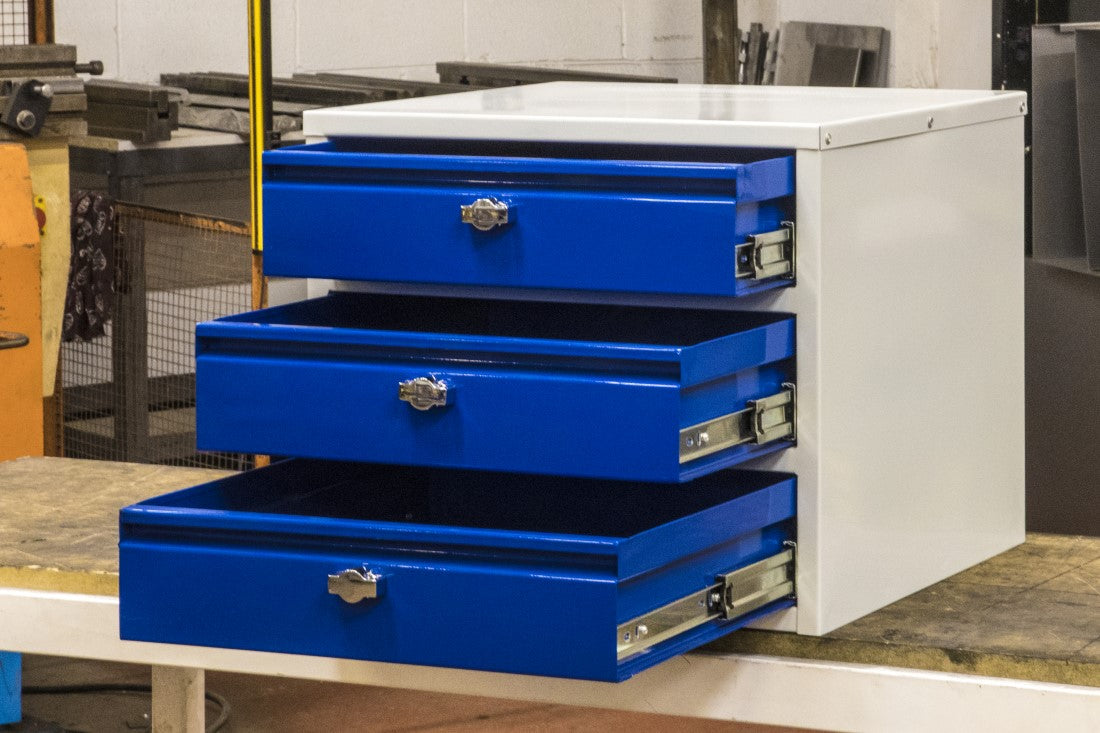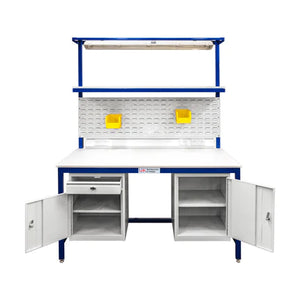0161 688 6737

How to customise your tool bench to tackle specific tasks
Having a well-organised workshop can make your next project easier, so you need to ensure that your tool bench is up to scratch. While a basic workbench provides a solid foundation, customising your tool bench to suit specific tasks can significantly enhance your efficiency, safety and overall productivity.
In this blog, our experts will explore various ways to tailor your tool bench to meet the unique demands of different projects and tasks. Whether you are a professional engineer or an enthusiastic DIY fan, we are here to help…
Assess your tool bench requirements
The first step in customising your tool bench is to assess your specific needs. Consider the types of projects you frequently work on. Are you primarily focused on woodworking, metalworking, electronics or automotive repair? Each of these activities requires different tools and setups. Understanding your primary tasks will help you identify which customisations will be most beneficial.
Add modular storage solutions
Modular storage solutions are a versatile way to customise your tool bench. Drawers, cupboards, tool panels and shelving units can be added to suit your needs. For example:
- Woodworking: install deep drawers for larger hand tools like planes and saws. Add tool panels for hanging chisels, hammers and clamps.
- Electronics: small drawers or bins can organise components, wires and circuit boards. Use a panel to keep frequently used tools like soldering irons and pliers within easy reach.
- Automotive: opt for heavy-duty drawers and shelves to store bulky tools and parts. Magnetic strips can be used to keep wrenches and sockets easily accessible.

Adjustable height options
An adjustable height tool bench allows you to modify the bench height to suit different tasks. This feature is particularly useful if you alternate between standing and sitting, or if multiple people use the bench. For tasks requiring precision, such as electronics work, a higher bench can reduce strain on your back and neck. For larger projects, like assembling furniture, a lower bench provides better leverage.
Integrate power and lighting
Having power outlets and lighting fitted into your tool bench can streamline your workflow. This is especially important for tasks that require the use of power tools or electronic devices. Powerpoints mean your work surface is free from loose cables and can include USB ports for charging small devices like phones or tablets.
Specialised work surfaces
Different tasks require different work surfaces. Customising the top of your tool bench can make a significant difference. For example, a solid wooden surface provides a durable work area that can withstand heavy use and be easily repaired if damaged. A metal worktop can protect the bench from sparks and heat, as well as provide a flat, stable surface. For electronics, an anti-static ESD worktop prevents damage to sensitive components. All the above are smooth, clean surfaces that are easy to wipe down and maintain.
Tool holders and vices
Incorporating tool holders and vices tailored to your work can enhance both convenience and safety. For example, a woodworking vice can securely hold pieces of wood while you cut, plane or sand them. A machinist's vice can hold metal parts in place for drilling or welding, while small clamps and holders can keep circuit boards and components steady during soldering.
Contact us for a FREE quote
Customising your tool bench for specific tasks can transform your workspace into a highly efficient and enjoyable environment. At UK Workbenches, we offer a range of solutions to help you create the perfect workbench for any project. Invest in your workspace today and experience the benefits of a bespoke tool bench.
To learn more about our range of high-quality workbenches and tool trolleys, visit our online store or contact our friendly team who are always happy to answer your queries.
